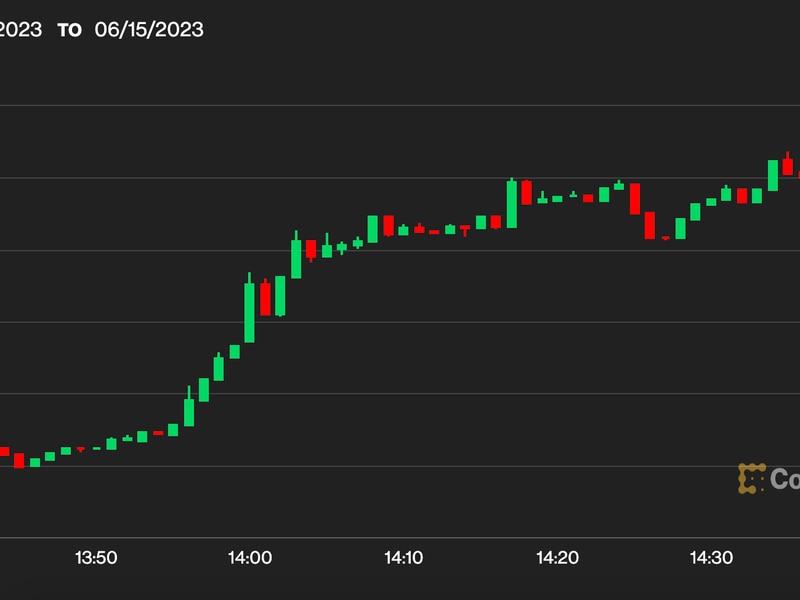How the Crypto Retail Market Has Changed
-
In 2021, daily liquidations worth billions of dollars occurred due to retail mania, with 80% of futures trading collateral margin in bitcoin.
-
Retail investors are now more “smart money,” having evolved to strategically buy the dips and sell the peaks in bitcoin.
-
Retail investors currently hold approximately 15% of the circulating bitcoin supply, equating to around 3 million bitcoin.
Retail investors were a big factor in the last crypto bull run, helping drive up prices and enthusiasm around digital assets. Many tasted crypto for the first during the COVID lockdowns of 2021 and 2022. And crypto companies were keen to drive interest among regular folk. The result: Super Bowl ads, celebrity endorsements and stadium sponsorship deals.
Then came the crash. This cycle, starting mid-way through 2023, has been more institution-led. These days, the big narratives are around ETFs and slow-but-steady TradFi adoption. And, as yet, retail investors have yet to return in the same numbers. (Memecoins are an exception, which I discussed here.)
I took a deep dive in market data from last year, trying to understand the retail/institutional split, and how the behavior of retail investors has changed from three years ago. Here are my top takeaways.
The evolution of retail
We can split retail investors into two categories: shrimps, who hold less than one bitcoin (BTC), and crabs, who hold anywhere between one and ten bitcoin.
In the last six months of 2017, bitcoin soared from $2,000 to $20,000. As hundreds of thousands of bitcoins were accumulated by retail, the price started to climb higher, showing they were chasing the market as crypto hit the mainstream media.
However, coming out of a prolonged bear market in 2018 and 2019, bitcoin moved again in late-2020 into early 2021 as the price climbed from roughly $10,000 to $60,000. However, we can see that this cohort was selling bitcoin during the entire period, locking in those gains as they were buyers in the previous bear market instead of buying the top they were selling.
Then came the Luna and FTX collapses in 2022, where retail investors really showed their intelligence, accumulating the most bitcoin on record. In June 2022, they accumulated over 300k bitcoins, while during the FTX collapse, it was over 525k bitcoins. Even as recently as the March 2024 peak, they were selling into the bull.
:format(jpg)/cloudfront-us-east-1.images.arcpublishing.com/coindesk/PPOQIYA6TBCLJEDDUPPCCBYIFQ.png)
Retail investors are perpetual buyers
The second takeaway is that as retail has evolved into “smart money.” There is increasing adoption of a dollar-cost averaging approach or been seen as a perpetual buyer. Again, taking less than ten bitcoins as retail, they currently hold around 15% of the circulating supply, translating to around 3 million bitcoin. But, as a cohort, they continue to increase their holdings with very little sell-side pressure. The data suggests they are the dollar-cost average cohort, and it would be fitting to categorize them as smart money as they continue to grow their bitcoin holdings and not be shaken out by price corrections.
:format(jpg)/cloudfront-us-east-1.images.arcpublishing.com/coindesk/KTOAOHAW6VFNNPPVM453SCCOXY.png)
This behaviour and mindset are similar to that of an ETF buyer or a passive investor who buys index funds each month. If we look at the iShares Bitcoin Trust ETF (IBIT), which has seen $21.5 billion of net inflows since launch, there have been only three trading days of net outflows, which is remarkable given bitcoin’s volatility. Notably, during the yen carry trade unwind on Aug. 5 and 6., IBIT registered $0 of outflows.
The ETF cohort has been underwater several times this year due to bitcoin’s multiple bull market corrections. However, they remained unfazed and continued buying. The current average price of the ETF investors is around $58k, so they are currently up 8% on their investment.
:format(jpg)/cloudfront-us-east-1.images.arcpublishing.com/coindesk/WT3LFGYZR5FGJE7YGXSYOTX4NE.png)
Liquidations are now a fraction of 2021
Lastly, retail isn’t being liquidated as much as 2021, when the government gave out cash stimulus on top of everyone being at home, which coincided with peak retail mania. As we can see in the data, liquidations were plentiful in the futures market in 2021, with billions of dollars worth of monthly liquidations becoming a regular occurrence.
:format(jpg)/cloudfront-us-east-1.images.arcpublishing.com/coindesk/OHFEEI6I5VAXDP7CG2ZRB5C7FA.png)
One of the main reasons for this is that a large percentage of futures contracts were margined in bitcoin and not dollars. So, the underlying collateral used for futures trading was bitcoin, which is volatile by nature. This got as high as 70% in 2021. As you can see below, the use of crypto-margin has continued to drop, with the majority of margin-trading in futures now being cash, which is not volatile by nature.
As investors matured and the cycle progressed, liquidations have became a feature, but considerably smaller than in 2021.
:format(jpg)/cloudfront-us-east-1.images.arcpublishing.com/coindesk/UDVNL7PK3NDCFDSN2TUMPO5ZOU.png)
Over the last couple of years, retail investors have become much savvier when investing in bitcoin and have similarities with ETF buyers. As the bitcoin market evolves, the next step is an options market to be traded on the ETFs, bringing a new sophisticated investor into the market and further enhancing retail intelligence.
Edited by Benjamin Schiller.








